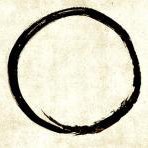-
Posts
406 -
Joined
-
Last visited
-
Days Won
1
Content Type
Profiles
Forums
Events
Store
Downloads
Gallery
Everything posted by FlorianB
-
I want to hint to the plants on the reverse: on the left is hagi (bush clover), on the right we see silver grass or obana, both connected with the end of summer and the beginning of fall. The motif on the rolled up fabric comprising a dragonfly and apparently nanakusa (seven herbs), also autumnal symbols. Maybe this time of year helps to indentify the strange tool?
-
Last one Tembo-style, signed 春 貞(?) Haru Sada (?)
-
The problem ares the differences in the tail-like form. Some show a widening at one end, others an even opening. Some have those lines beside, others not. I can’t even decide if it is a positive or negative sukashi. In the last Tsuba the design is part of a bizarre landscape and thus clearly positive opening. I think, in repeated copying of this detail the original idea got lost - or changed. Some of the examples above reminded me to deterioration like worm eaten wood.
-
Maybe the shinsa team got the insight that the traditional classification system of the pre-Edo works is based on pure speculations…
-
I think the larger size of the butterfly and its elaborate shape together with the existence of a hitsu ana lead to a Tosho instead of Ko-Tosho attribution. Today the NBTHK is more cautious about using a „ko“ prefix anyway. For me the surface looks O.K.. If You compare the surface of Tosho Tsuba You’ll see a variety of finishings. There’s no rule because some Tsuba have been more cared for, other suffered more or less through the centuries. And, yes, as Jean pointed out it could be a younger revival piece.
-
I own a modest Tsuba with Tanabata festival motif. It depicts several papers with inscriptions hung in bamboo trees. Note the shape of the one upper right (upper left on the ura). I wonder if such paper (used for what? Uchiwa fans?) is the origin of the sukashi in question.
-
-
It seems that the Hoan smiths have had difficulties to earn their living. The Shodai and the nidal worked mainly for the Asano but also for other clans. The reason for this seems to be meagre wages: the Shodai received 10 Koku rice by the Asano which is said to be little. It is not mentioned they sold their works to civilians like wealthy merchants. Possibly that’s the reason they where not prosperous like other schools and changed business later. Their works have been made for an exclusive circle and not for masses like Akasaka so the demand was limited.
-
There’s an interesting discrepancy in the dates. If the first Generation died 1613 or 1614 the Nidal was 13/14 years old. Very young at least. It is mentioned in the sources above the Nidai became the head of the family not until 1645 (thus explaining the later death date of the Shodai in Markus’ list). If the Shodai died at the earlier date, the school was „headless“ about 32 years.
-
Re-reading the topic I understand You referred to the shape of the piece in question. Of course it is far more easy to construct along the axes, so four or eight lobed Mokko-forms are common (this applies to motif construction, too). However, there are many other shapes also in uneven numbers. At least they are rare but not uncommon. Your piece consists out of seven zones which seem not to be in the same size. So the artist must have used his visual judgement in the fan layout. I’m not sure if the artists have been able to calculate angels at all. IMHO constructions in an uneven number could be evidence of a more sophisticated - or a more creative - artist.
-
Sorry, can't see any flood. On the Fuchi is a bridge over a stream depicted, on the Kashira foliage with glimpses of a roof and torii.
-
Not necessarily. Actually seven is a lucky number and many groups of seven are known, i.e. seven gods of good fortune, seven virtues, seven autumn plants (nanakusa) etc. There are many Tsuba with a composition made of seven like this: Sometimes the whole number out of seven is distributed on both sides.
-
I used fine paint brushes serrating the upper tips off. Not bamboo, but it worked as well.
-
Rather strange. At first I thought of a bonsai tree - but without a bowl? Is there something on the reverse wich could clearify the motif?
-
The other way round - Daigoro is the successor of Kyo Sukashi in middle/late Edo period Daigoro is well known for an elaborate lattice-like design like these: Sometimes the waterwheel-bridge-motif in question is assigned to Daigoro but I think because of a lack of refinement it is earlier, thus Kyo-sukashi.
-
As I understand the production of sukashi Tsuba the design was at first crudely holed using chisels while in a red hot condition. Drilling was invented not before the 19th cent.. After cooling the plate the holes have had been filed into the final shapes and the plate itself was filed or polished, too. Thus I think this particular tuba is a rare reference material presenting the intermediate as a final result.
-
I don’t think it’s cast. As I wrote in the other thread my idea is that this Tsuba is just in the state of an intermediate step. The basic form was produced but a final exact execution is missing for what reason ever. Maybe a customer was fond of the blurred design. The second example is of poor quality and the Akasaka-label on the third is nonsense. This Yodo-bridge-design is typical Kyo-Sukashi (or later Daigoro) and the gilding must be a subsequent addition.
-
Sorry to say, but this Tsuba has a very peculiar look, especially in comparison with the examples by Dale. Maybe not finalized…?
-
At least the mark should be quality, not quantity. But I must admit - lucky if you could combine both!
-
In my eyes these are study pieces for the beginner but for a decent price the collection seems OK. However, some day it won’t be easy to get rid of them again. BTW: No. 7 lost the rim, it should look like: https://world-seiyudo.com/product/tu-050522/
-

Itomaki Gata, (Vertical Spindle Shape Tsuba), Historical Examples ???
FlorianB replied to Barrett Hiebert's topic in Tosogu
Can’t believe, that there are much pure itomaki-gata out there, because it is not convenient for practical use. The spikes could entangle with the clothes while wearing or drawing a sword mounted with a Tsuba of this particular form. -
Tosho-style. Sorry to say, I recognize a lack of precision in execution (the shape of nakago ana for instance) for giving the impression of an older piece.
-
Hi Justin, I agree that it is an original from Edo period, however difficult to ascertain to a specific school or smith. The condition, too, isn’t the best. As Dale suggested try to restore the rusty areas with antler or bone. Nice contrast in between the iron surface and soft metals, copper, brass, silver and shibuichi for the rat. It seems that the patination of the rat is partially rubbed off. Sometimes after many years it might restore by itself. Nice find anyhow! Any dimensions?
-
Miraculously it has been sold in the last hours - what a pity!
-

Ohno Christian/Buddhist Tsuba (for whopping $112 on Jauce)
FlorianB replied to Iaido dude's topic in Tosogu
The surface tells it own tale.










